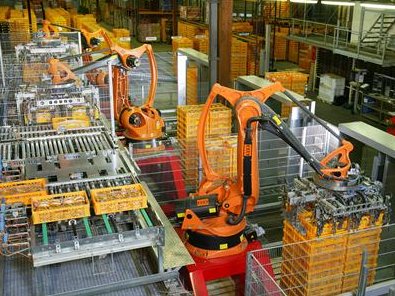8 Components for Leveraging Sage X3 by Adding ADC Capabilities

The Sage X3 platform is powerful and contains a basic warehouse management system (WMS) in the standard offering. To unlock these features, customers often choose to enable the automated data capture (ADC) screens. Let’s take a brief look at what is required to make an ADC expansion a success.
- Barcode/RFID scanner mobile computers. The key to data capture efficiency is the ability to quickly capture the product data you need. The choice of barcode, RFID, or a combination of both are specific to the application, but interchangeable hardware to support all three cases are readily available.
- Client-side software to run on the scanners. The X3 ADC screens runs in VT100 terminal emulation mode, so any VT100 emulator will work. However, to enable ADC enhancements like accelerated login and automated menu navigation and the ability to seamlessly transition between barcode and RFID, a basic emulator is not enough and more advanced software is required.
- ADC licensing and setup. All the basic ADC functionality is included with the X3 software you already have. There is a license fee for each device that will communicate with X3. Additionally, you will likely want to configure and possibly customize ADC to your business process.
- WiFi System. You will likely need to install or upgrade your existing WiFi system. The mobile scanners send their data back to the host server running X3 over a wireless network. The design of a WiFi network in a warehouse or manufacturing facility is a specialty that creates the need not only for adequate coverage, but special design techniques to avoid data loss, dropped connections, and prevent unwanted noise traffic on your wired network as inventory levels change.
- Printers (either barcode, or barcode/RFID combo). You will need to attach identification labels to the each, cases, pallets, or other standard unit of measure you want to track. Most customers choose to print these on demand.
- Consumable labels. See above. These are the barcode or RFID tags that will be affixed to the items you wish to track. They can be barcode-only or barcode with RFID.
- Reusable labels. These more durable labels are affixed to reusable containers used in manufacturing for WIP tracking. They are often applied to trays, totes, or bins to allow track and trace.
- Address plates. Your WMS functionality requires you to “put away” items in specific address locations. This is best accomplished with barcode and/or RFID address plates that allow you to easily scan the address into the correct ADC field.
It is important to know that your chosen RFID/barcode vendor can work with your SAGE reseller/consultant to help you every step of the way. When you consider the various stages from design through implementation, training, and support, you see the necessity in having an RFID/barcode expert that knows how to maximize your system and goals. It is key to find a company that offers scanners, proprietary, proven X3 ADC compatible software for the scanners, WiFi system (design, hardware, install, support), printers, and any barcode/RFID labels/plates you will need for your project. With that expertise and knowledge, your project will surpass expectations and give you a new level of information and insight into your operations.
